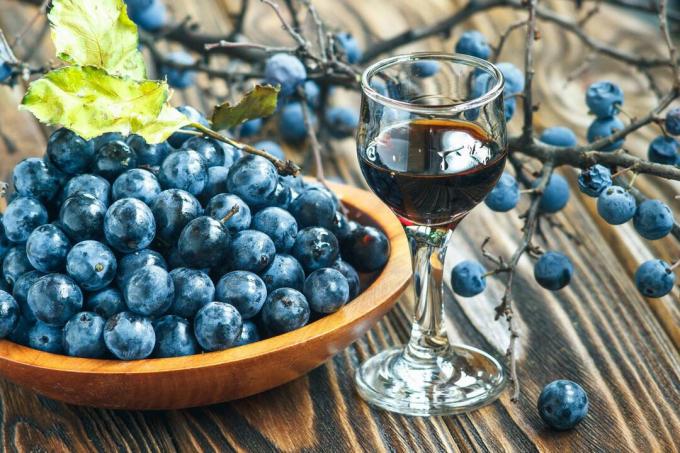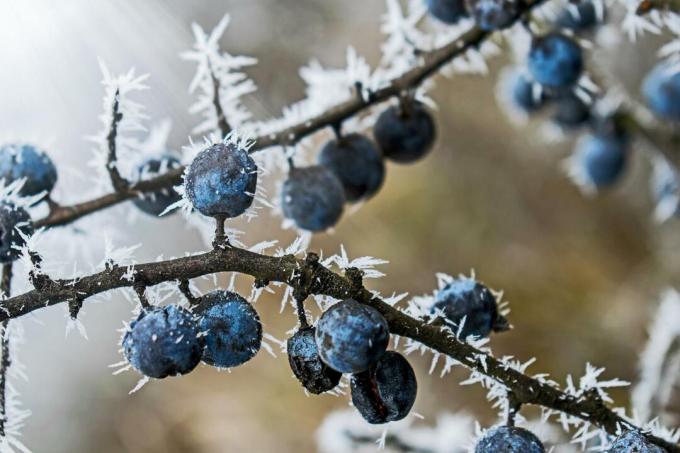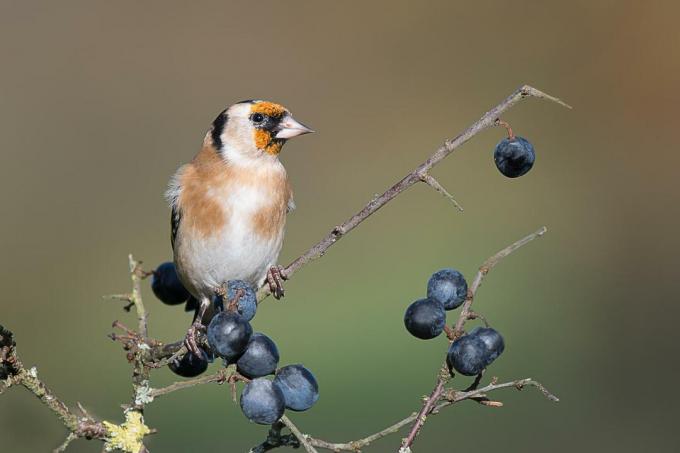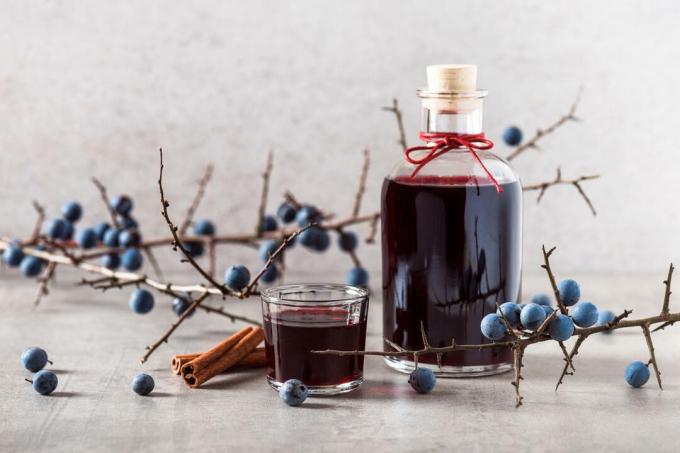Not only birds like to taste the berries of the sloe, we humans can also benefit from the fruits. We reveal when and how to proceed with the harvest and how to best process sloe.

sloes (Prunus spinosa) often grow wild and can be found on many roadsides, slopes or hedges. Birds love the black-blue berries and find plenty of food on the bushes in autumn. But humans can also use and process the healthy berries of the sloe. In this article we will tell you when it is best to harvest sloes, how to do it and what delicious things can be prepared from sloes.
contents
- The right time to harvest sloes
- Harvesting sloes: This is how you go about picking
- Can you eat sloes raw?
- Dry and freeze sloes
-
Processing sloes: You can do this with the fruit
- Sloe juice and syrup
- Sloe wine, schnapps and liqueur
- sloe jam
The right time to harvest sloes
When can you harvest sloes? Sloes are ripe when the skin is deep blue-black up to the base of the stalk. This means that you can already pick the first ripe sloes in autumn. An advantage of harvesting sloes early is that there is the greatest chance that not all the fruit has been scavenged by birds. Because birds love the fruit of the sloe. However, in autumn the berries still contain a lot of tannins and bitter substances, which do not exactly make the fruits taste delicious. But that changes after the first frost. Because once the fruit is frozen, its cell walls become more permeable and the starch is converted into sugar. At the same time, the tannin content decreases. As a result, the fruit tastes milder. Sloes should therefore best be harvested between the end of November and mid-December.
Tip: If you don't want to share your sloes with birds, you can also harvest the fruits in autumn and then put them in the freezer. The fruits have experienced an artificial first frost and also taste milder.

Harvesting sloes: This is how you go about picking
It is not for nothing that sloes are also called sloe thorns: the branches are very prickly and have many thorns. Picking sloes is therefore not that easy. It is therefore advisable to wear gloves and long-sleeved clothing when harvesting. The berries are then picked one by one from the branch.
Can you eat sloes raw?
The rumor persists that sloes are poisonous when raw and therefore cannot be eaten fresh. However, this is only partially true, because sloes can be enjoyed raw – but only in moderation. The seeds of the sloe contain amygdalin. After consumption, this substance is converted by our body into hydrocyanic acid. This is very toxic to humans. However, the content in the small seeds of sloe berries is low, so you would have to eat huge amounts of sloe to get poisoned.
Attention: However, eating sloe raw is dangerous for children. You are not able to excrete the hydrocyanic acid. Therefore, consumption of raw sloe can cause nausea, vomiting and diarrhea in children and should be avoided at all costs.
Quite apart from the fact that raw sloes are safe for adults to eat in small amounts, many people don't like raw sloes because they are bitter and astringent. However, this is mainly the case when the fruit has not yet suffered frost. However, it is worth trying the raw fruits, as they are said to have antioxidant, anti-inflammatory, stomach-soothing and digestive effects and are therefore very healthy.

Dry and freeze sloes
Sloes only keep fresh for a few days. It is therefore advisable to process sloes soon. An easy way to preserve sloes is by drying or freezing. The best way to dry sloes is in the oven or in a dehydrator. You can then enjoy the dried fruit as a snack, for baking or in muesli. To freeze sloe, wash and dry the fruit, then place in freezer bags. In this way, the fruit will keep in the freezer for several months.
Processing sloes: You can do this with the fruit
Sloes are extremely versatile and there have been numerous recipes with sloes for centuries. The classic is of course the sloe liqueur, but jam or juice made from sloe also taste delicious and are healthy.
Sloe juice and syrup
Sloe juice is easy to cook from sloe, water, sugar and lemon juice. The juice contains plenty of vitamin C, flavonoids as well as tannins and bitter substances. Especially the latter are very healthy and have a diuretic effect, stimulate the appetite and help with cystitis. Sloe syrup has similar properties and can be boiled down from sloe with water, sugar and lemon juice.
Sloe wine, schnapps and liqueur
Those who like it a little alcoholic or even high-proof will certainly enjoy sloe wine or sloe liqueur. Sloe wine is made with water, sugar and fermentation yeast in a wine balloon and can be fermented either tart and similar to red wine or sweet like a dessert wine. Making sloe schnapps requires a still and some knowledge of schnapps making. However, it is easier to prepare sloe liqueur yourself. Sloe liqueur is also called sloe fire or sloe gin and is made with sugar and gin, rum, vodka or grain. If you like, you can season the whole thing with cinnamon, cloves or star anise.

sloe jam
Sloe jam is delicious and a good way to preserve the fruit. The preparation is very simple: only sloes are boiled down in a ratio of one to one with jam sugar.
All about the cultivation of sloes in your own garden, you can read about it in our special article.
